The Evans and Gordon 94 (E+G)ringing mask bases it's mask primarily on the properties of the water-leaving radiances in band 2 (520 nm) after a bright target, and not the amount of brightness that bright target has. (It also depends on the water-leaving radiances to behave in certain ways).
The masking for the E+G mask is shown in the image below for the same case as above. The yellow is the combination of the land, high Lt and cloud masks and the red is the ringing mask.

The E+G mask considers a pixel to be affected by ringing if the nLw_520 is > 0.7 in the 40 pixels after the bright target. In this scene, many regions on both sides of the Florida peninsula are above this value and thus, the mask is at its maximum of 60 pixels (20 extra pixels are added after this region).
Two treatments were tried with the E+G mask: the first using the presence of the land, high Lt or cloud masks to signal a bright pixel (V1) and the second using the Lt_750 / cos( solz )> 2. as the bright pixel signal.
Images of water-leaving radiance, chlorophyll and 670 nm optical thickness are shown for 4 cases: no ringing correction, V1 E+G mask, V2 E+G mask and the Mueller mask. Click on the image sub-area to see an image of the entire dataset.
| Product | No ringing mask | V1 E+G mask | V2 E+G mask | Mueller mask |
|---|---|---|---|---|
| Lwn_443 |
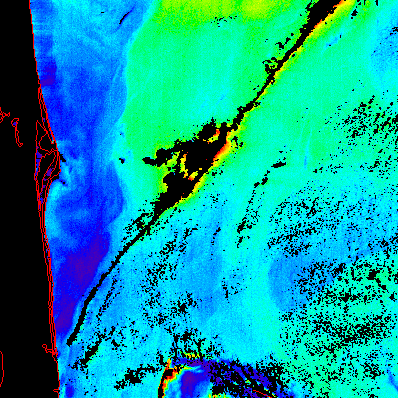
|
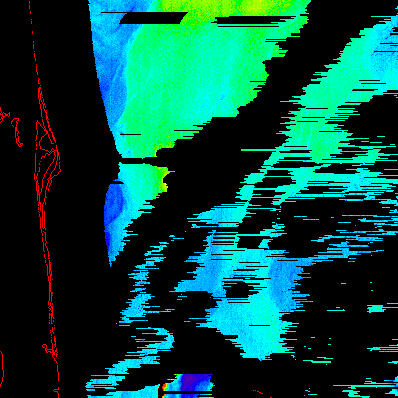
|
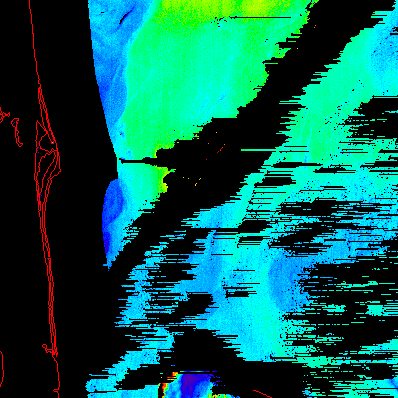
|
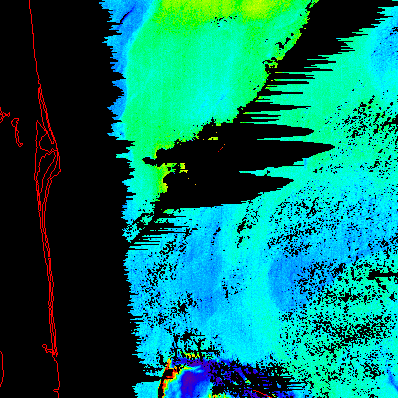
|
| Lwn_520 |
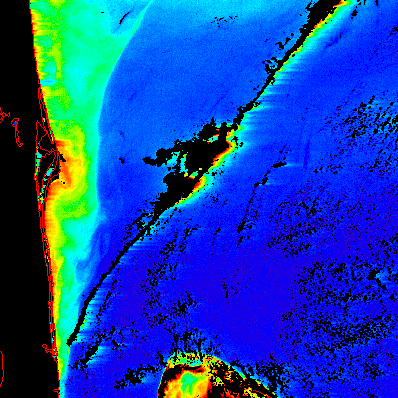
|
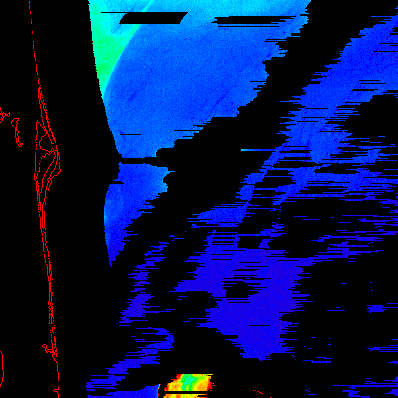
|
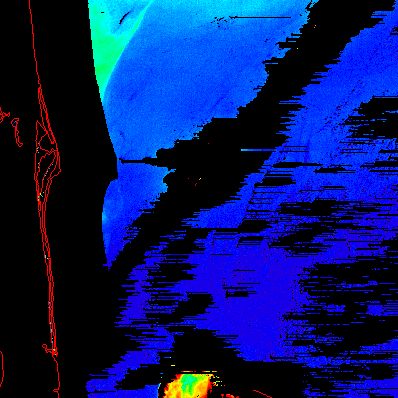
|
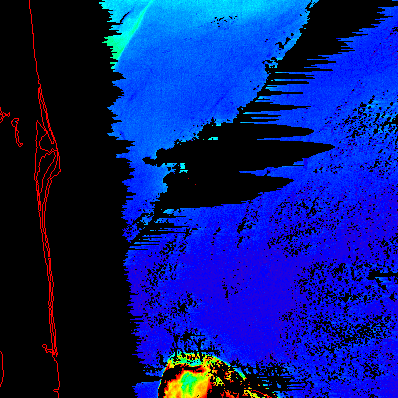
|
| Lwn_550 |
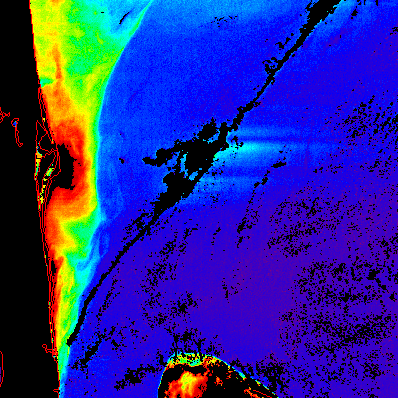
|
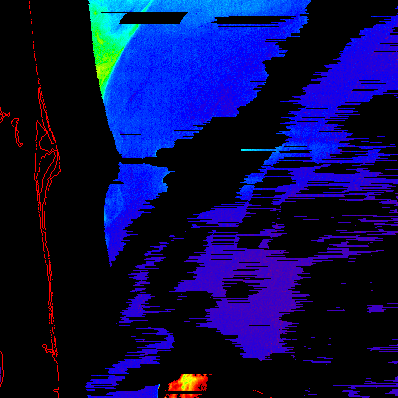
|
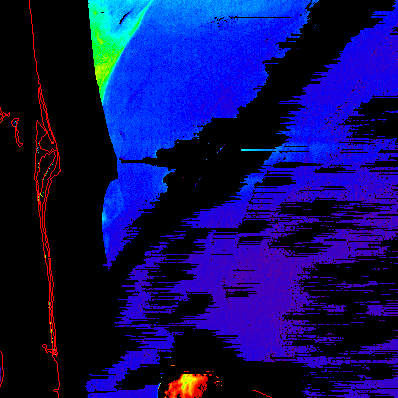
|
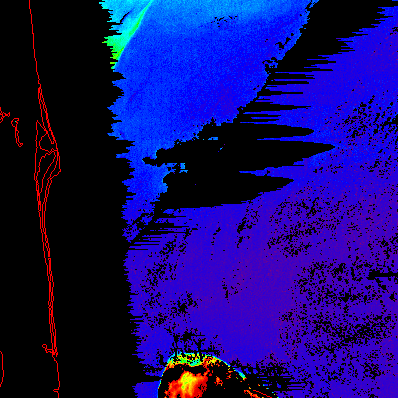
|
| chlor_a |
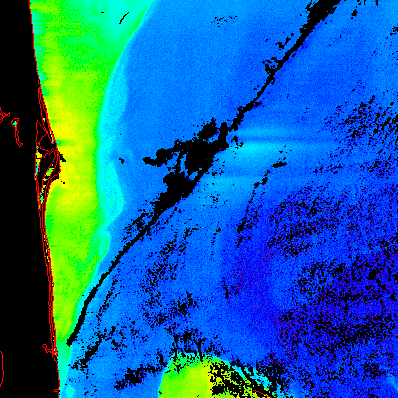
|
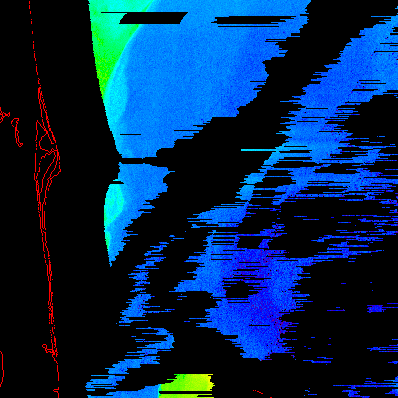
|
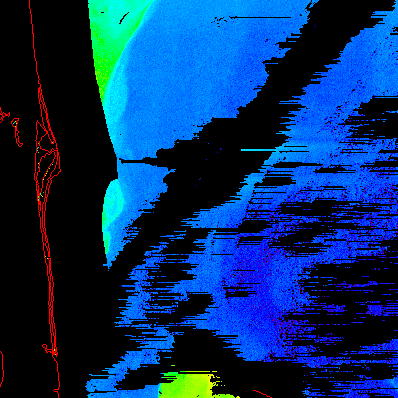
|
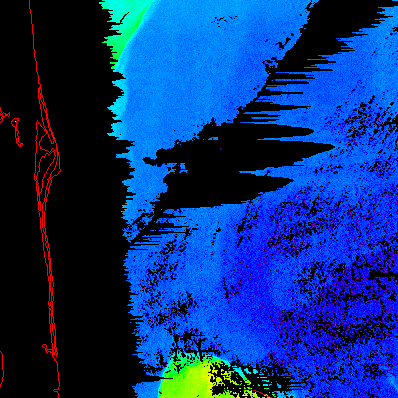
|
| tau_670 |
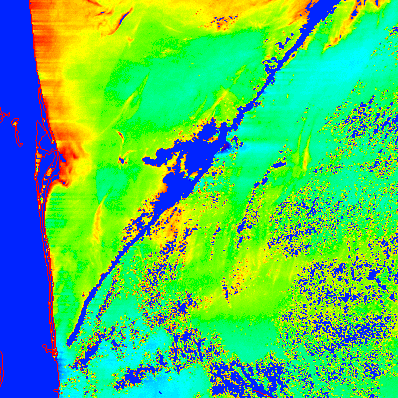
|
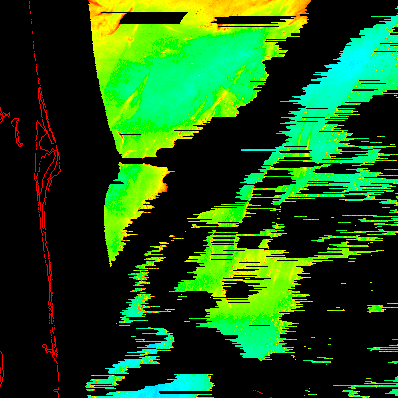
|
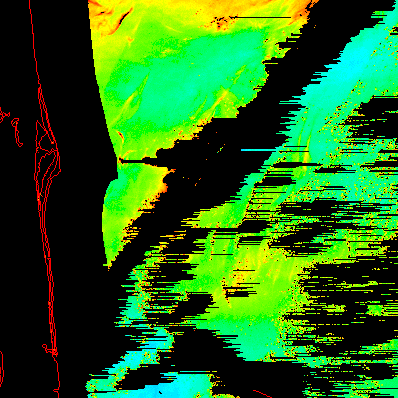
|
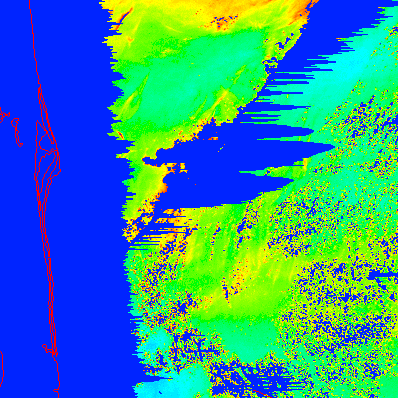
|
The amount of pixels masked by the E+G for this case is slightly more than the amount masked with the very conservative Mueller masking. This is probable mainly due to the high nLw in many parts of this image and the mandatory masking of at least 20 pixels after any bright target (wheras the Mueller mask can be zero or less for a marginally brighter target.
The E+G mask also does not respond as well to effects of bright targets as the Mueller mask does.